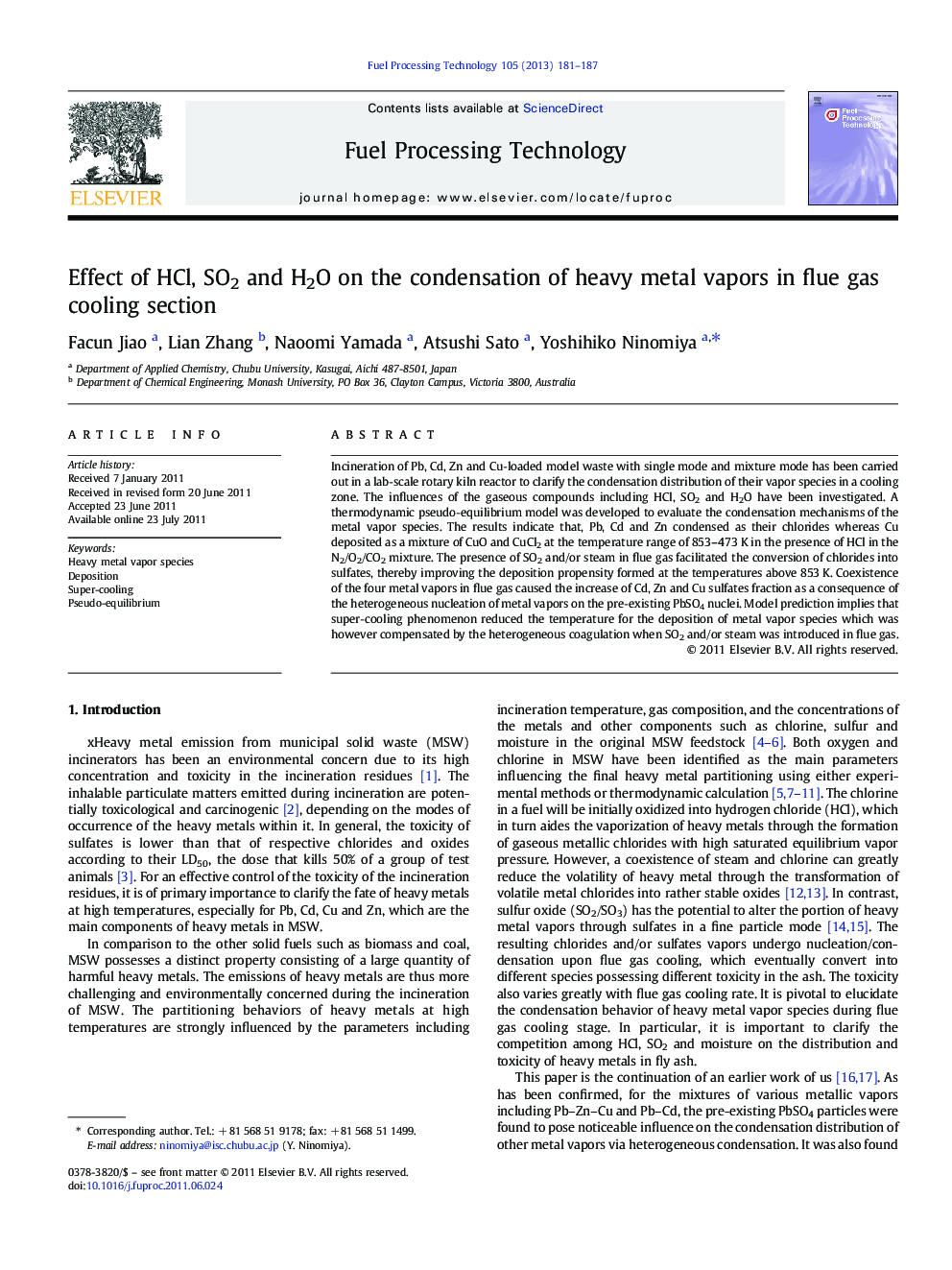| Article ID | Journal | Published Year | Pages | File Type |
|---|---|---|---|---|
| 210351 | Fuel Processing Technology | 2013 | 7 Pages |
Incineration of Pb, Cd, Zn and Cu‐loaded model waste with single mode and mixture mode has been carried out in a lab‐scale rotary kiln reactor to clarify the condensation distribution of their vapor species in a cooling zone. The influences of the gaseous compounds including HCl, SO2 and H2O have been investigated. A thermodynamic pseudo‐equilibrium model was developed to evaluate the condensation mechanisms of the metal vapor species. The results indicate that, Pb, Cd and Zn condensed as their chlorides whereas Cu deposited as a mixture of CuO and CuCl2 at the temperature range of 853–473 K in the presence of HCl in the N2/O2/CO2 mixture. The presence of SO2 and/or steam in flue gas facilitated the conversion of chlorides into sulfates, thereby improving the deposition propensity formed at the temperatures above 853 K. Coexistence of the four metal vapors in flue gas caused the increase of Cd, Zn and Cu sulfates fraction as a consequence of the heterogeneous nucleation of metal vapors on the pre‐existing PbSO4 nuclei. Model prediction implies that super‐cooling phenomenon reduced the temperature for the deposition of metal vapor species which was however compensated by the heterogeneous coagulation when SO2 and/or steam was introduced in flue gas.
► A thermodynamic pseudo-equilibrium model was developed to evaluate the condensation mechanisms of the metal vapor species. ► Pb, Cd and Zn condensed as their chlorides whereas Cu deposited as a mixture of CuO and CuCl2 in HCl/N2/O2/CO2 mixture. ► Introducing SO2 and/or H2O facilitate the transformation of chloride to sulfate. ► Coexistence of the four metal vapors in flue gas caused the increase of Cd, Zn and Cu sulfates fraction as a consequence of the heterogeneous nucleation of metal vapors on the pre-existing PbSO4.
